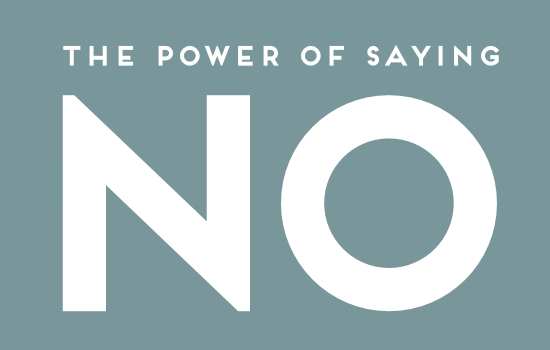The Power of Saying No!
Thursday 23rd April 2020 Dave Sharp Start Ups!
This post is an attempt to try and position the usage and the reasoning for saying no to customers. The prevailing wind of client management theory has always been about saying yes to everything and then trying to figure it out afterwards. I've always gone along with the idea that if someone is trying to give you money then you should let them, but under certain conditions it would be better not to. This is my attempt to explain that ideology.
There are a number of reasons why you might want to say no to a client. These are my top ones but there are undoubtedly more:
- The client is asking you to do something that is not in your core skill-set or within the focus of your business.
- The timing is wrong, the work being offered is above your current capacity to deliver to a high standard.
- The method is unacceptable. The client is asking you to produce the work in a way that you don't agree with or can't manage effectively.
- The regime is not acceptable. The client is asking you to work in a way that is not in the best interests of your staff (night shifts, weekends, extended days)
- The money is wrong. The work or service you are providing is undervalued.
Within small businesses especially, there is an overwhelming urge to accept almost any work that comes your way but this is often a false economy. Taking on a contract that will require you to spend £50k to earn £60k is bad business. Its too much financial exposure for not a lot of financial upside - particularly if you have to wait for the money. This kind of deal only really works if the time-scales are short and payment is on delivery.
For me, all of the above represent risks past a point where it makes sense. Most of them come at the risk of work delivered being less than the highest quality and therefore your reputation in the marketplace is in jeopardy. A tarnished reputation can take years to repair and cost you more work that the value of the original contract. Other issues include internal staff problems caused by clients dictating to the company. You might deliver the work OK and end up losing a valuable member of staff - at which point any profit is lost as you incur the costs of replacing the employee.
Its not a bad thing to say no to a client on the basis of what I've listed above but what about if you're the one being told no. What are your options?
In my experience most no's are not absolute. There are a number of unspoken aspects to a no and its a case of understanding what those unspoken issues might be. I tend to start with a question:
"I understand you've said no, and I'd just like to know if its a no not now or a no not like that?"
My current experience is that the timing and the method/end result are the first two objections that will produce a no. Timing is an easier one to deal with. Just ask when the right time to come back is. Its common for companies to work in cycles and have key points in the year for certain activities - its just going to be better for you to interact with them at the right point in the cycle.
"No not like that" has a number of possible outcomes. They may just mean that they would like a red one not a blue one and it could be just something that simple. It might be that its the right design in the wrong material or the other way around - the material is great but the design isn't what they would like. The key thing is that the no has not brought the discussion to a negative conclusion and that the dialogue is continuing and you are moving towards a solution and a solution inevitably means a yes.
So in recap:
Its perfectly acceptable to say no to work that is likely to effect you negatively in some way. It's sometimes difficult to walk away from money on the table but its about creating the right business stance. Customers will not misunderstand why your saying no if you take the time to explain and will most likely respect you for the stance you've taken.
When you hear no then its not the end of the story. No not now and no not like that as questions take you down different paths but those paths are forward not backward facing. The important outcome is that the conversation and the relationship are maintained and are likely to bring you to a new point of dealing with each other.
Next Article
If you’re staring down the barrel of a technical due diligence investigation for the first time, the prospect can be daunting. The VC has brought in a specialist to dig down to the core of your business and you’re quite rightly feeling vulnerable and nervous. The following article is aimed at helping you understand what is happening and how to deal with it calmly and objectively.